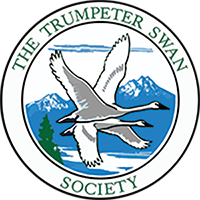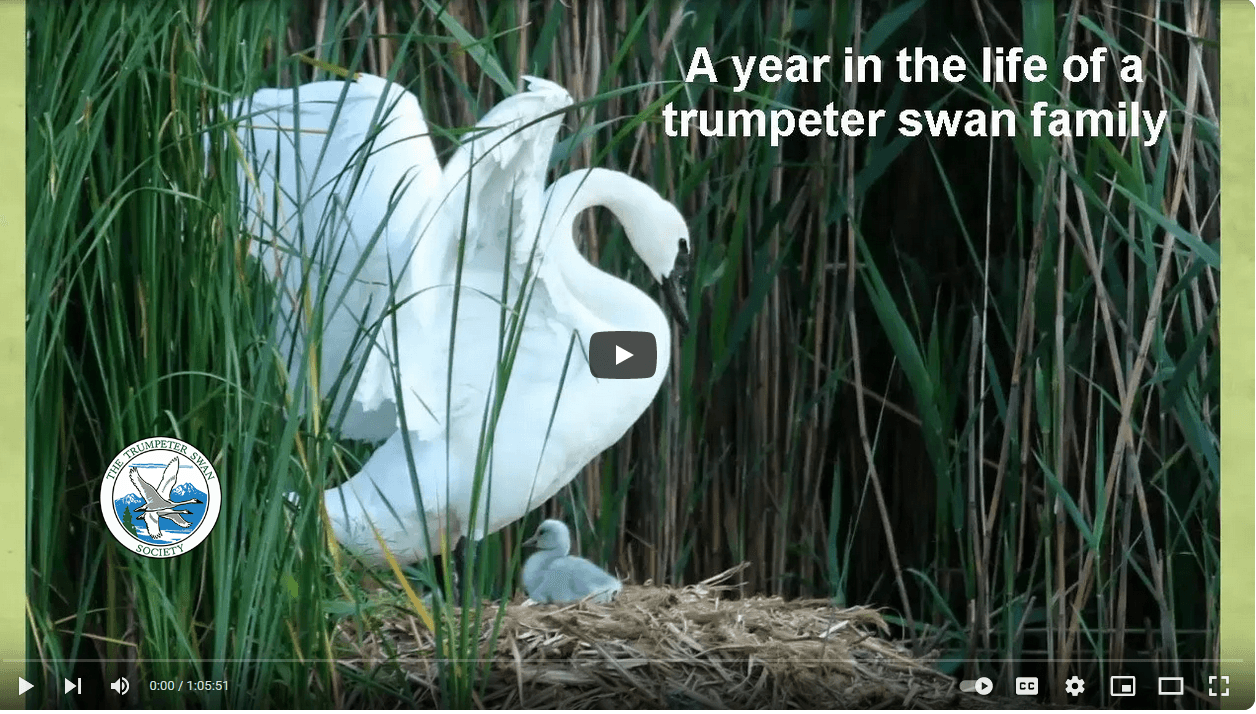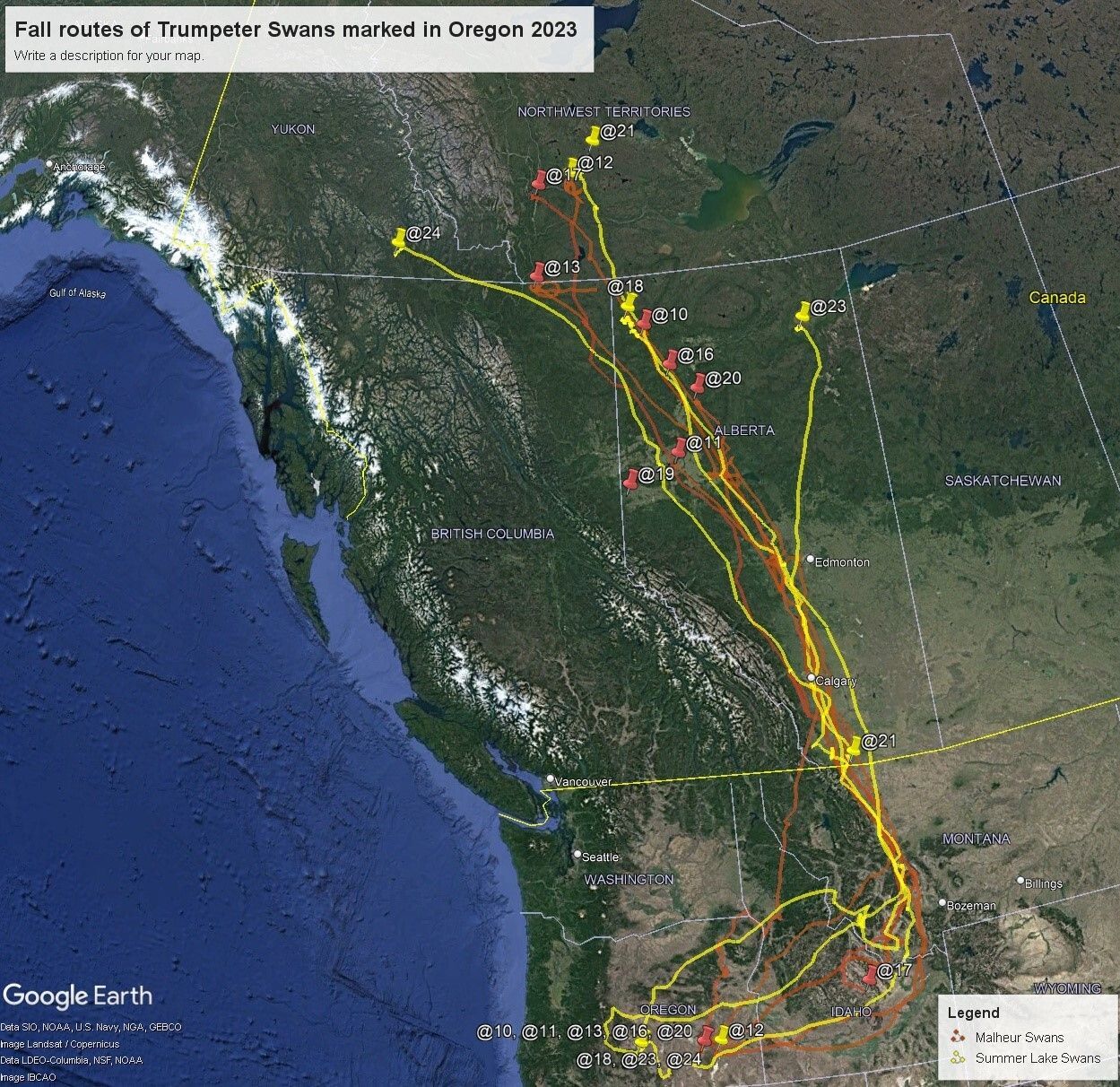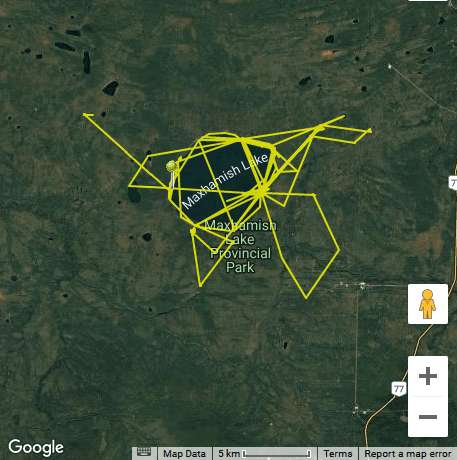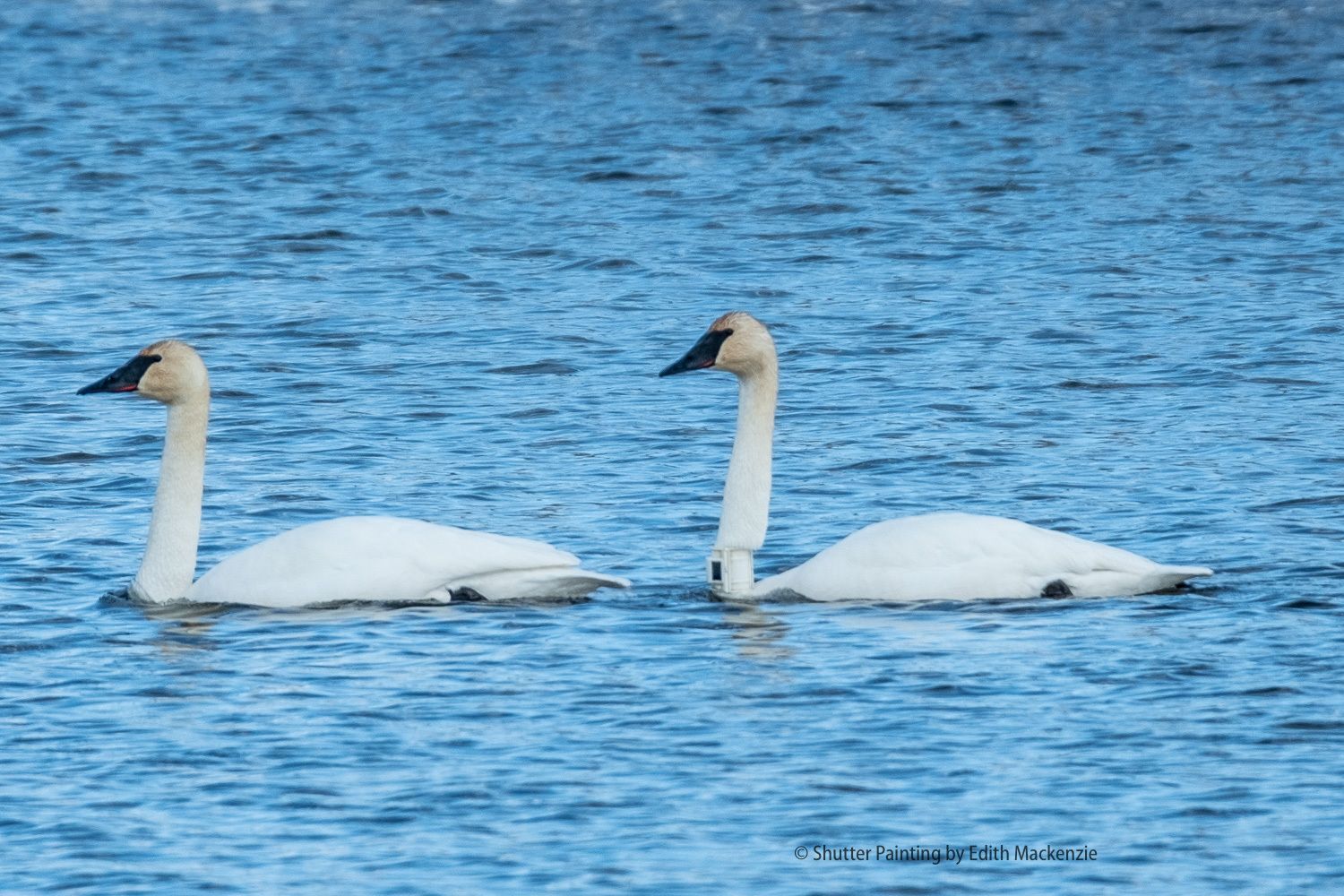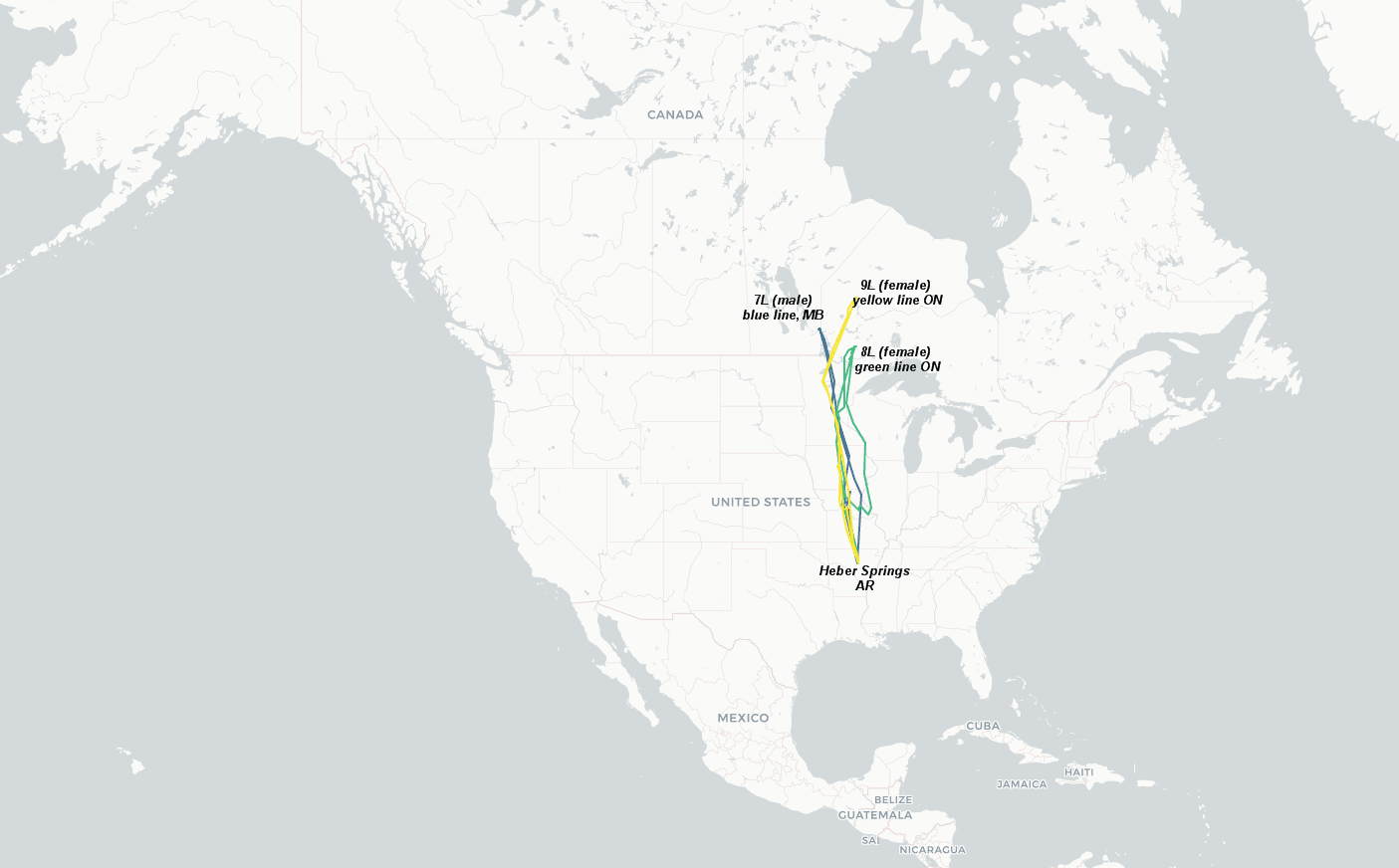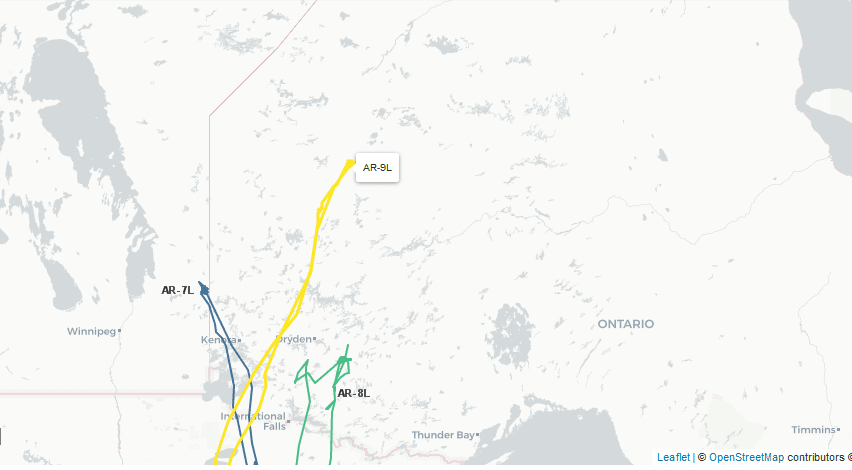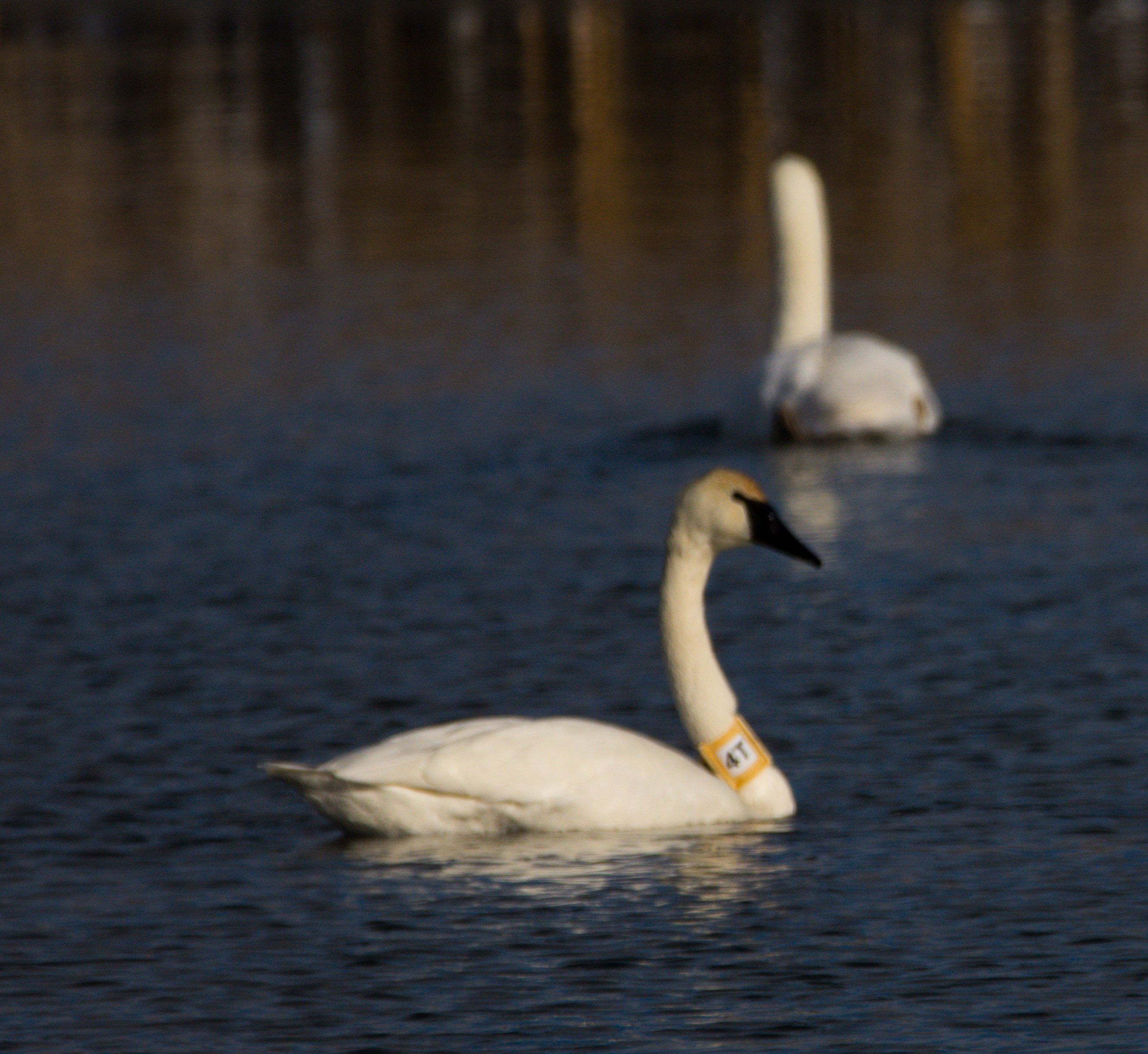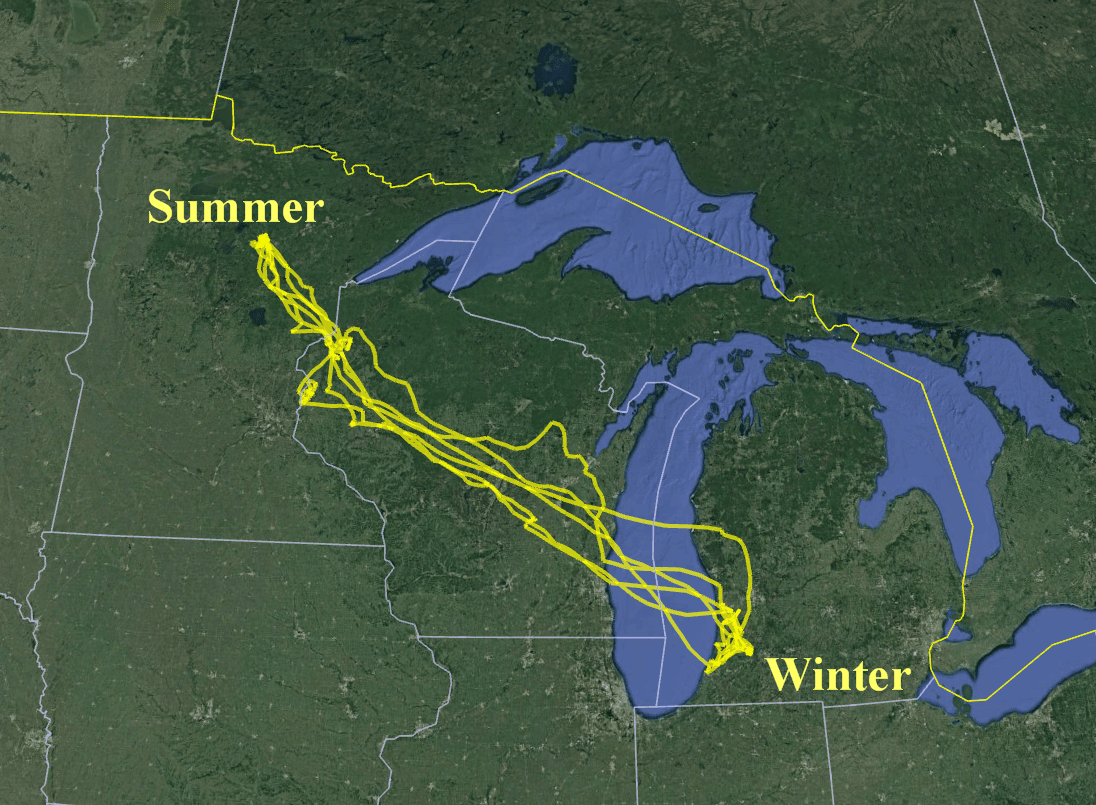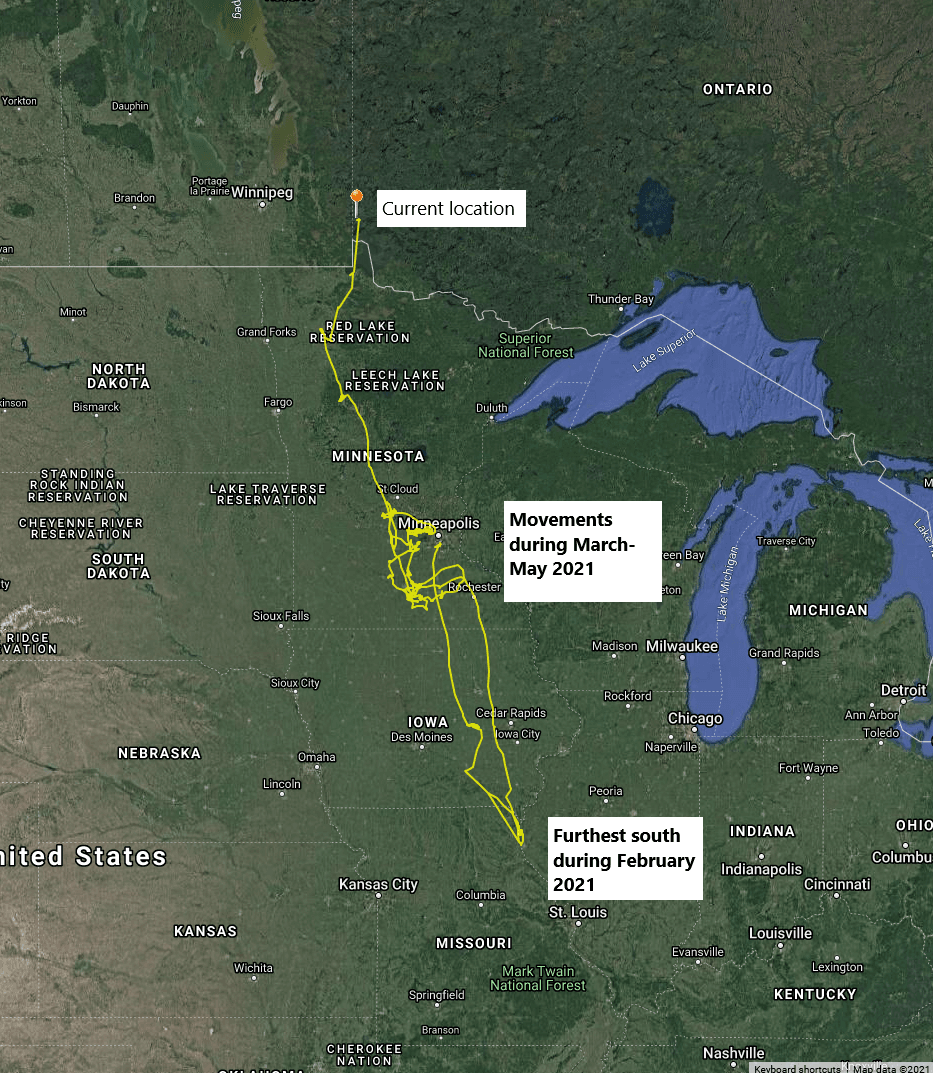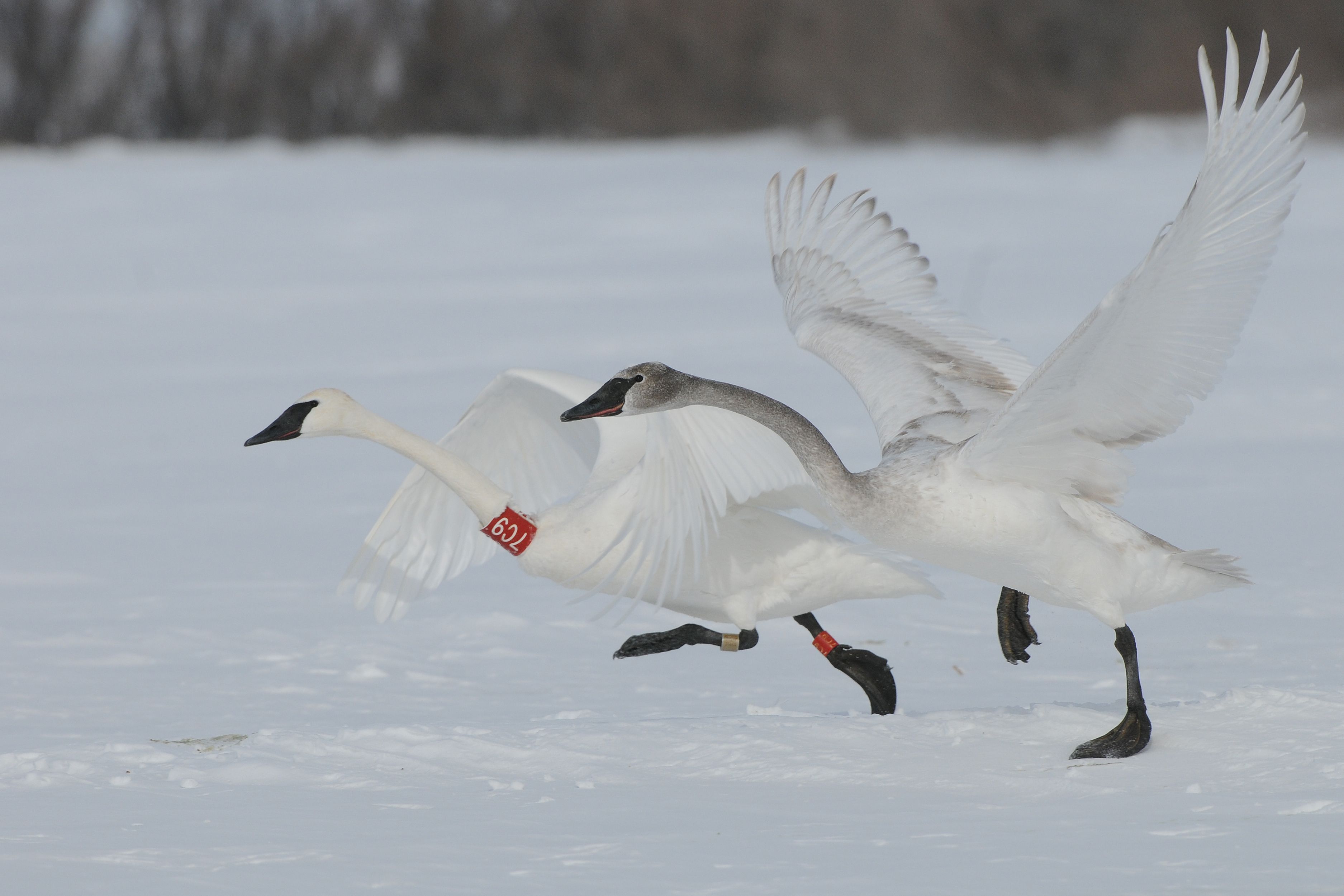Photograph by Kathryn Cubert
Tracking Swans
It is so interesting to see where a swan travels during the year!
Swans can be tracked in two ways.
One way is using a GPS/GSM tracking collar which records the GPS coordinates where a swan is every 15 minutes. The information is stored in the collar and when the swan goes by a cell phone tower, the information is downloaded for scientists. The tracking collars have black panels which are solar panels to recharge the batteries.
The second way to track a swan depends on you and people just like you who see a swan with a neck collar, wing tag, or a colored leg band. Those collars don't track locations. The only way to know the location of a certain swan is by a person reporting it, through Trumpeter Watch or to the Bird Banding Lab.
Here are some fun stories of swans and maps of their movements.
Some of the maps were created using information stored in the GPS/GSM tracking collar. You can see the travels of western and midwest swans with GPS/GSM tracking collars.
You can also see how reports of swans with plastic collars, wing tags or leg bands that are not GPS tracking collars help wildlife biologists and researchers.
Click on the photos to see and learn more!
Tracking swans with GPS/GSM collars
Western Swans with tracking collars
Western swans are being tracked through GPS/GSM tracking collars. "GPS" means Global Positioning System.
Midwest swans with tracking collars
The largest swan tracking study for Midwest trumpeter swans used GPS/GSM tracking collars from 2019-2023.
This project is through the University of Minnesota and the Minnesota Cooperative Fish and Wildlife Unit. States and provinces participating are Arkansas, Iowa, Manitoba, Michigan, Minnesota, Ohio and Wisconsin.
Check out these special movements of Minnesota and Arkansas swans with GPS/GSM tracking collars!
Maps through the University of Minnesota and the Minnesota Cooperative Fish and Wildlife Research Unit and courtesy of David Wolfson
Neck collars, leg bands and wing tags
An Ontario swan with a 'wing tag'
Ontario attaches large yellow 'wing tags' to track its swans. Midwest and western states use neck collars and colored legs bands to track swans.
Wing tags and colored neck collars and colored leg bands don't collect tracking information.
It is someone like you who spots a swan with a wing tag, neck collar or colored leg band that lets us know where a swan is during the year.
The Trumpeter Swan Society shares the report with the state or province that put on the wing tag, neck collar or colored leg band.
Iowa swans with neck collars
States tracking swans use colored neck collars and sometime colored leg bands. These are called 'marked' swans.
Each collar code and leg band is unique to the swan. It is its 'name tag'.
Because each code is unique, when a report of a swan with that code comes in, the location and date are known for that swan. Each report tells the unique story of a particular swan.
Each 'marked' swan also receives a metal leg band with a unique US Fish and Wildlife Service number.
Iowa used both red and green neck collars and leg bands.
These plastic neck collars and leg bands do not automatically track locations. They are 'non transmitting' collars. It is through a person just like you who sees a 'marked' swan and reports it through Trumpeter Watch that scientists know where a swan is and where it travels during the year!
